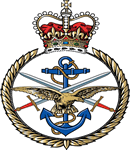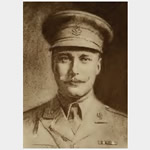Commemorated: | |||
| 1. Memorial: | Villers-Faucon Communal Cemetery Extension | I. A. 18. | |
| 2. Book: | The (1921) Masonic Roll of Honour 1914-1918 | Pg.134 | |
| 3. Memorial: | The (1940) Scroll - WW1 Roll of Honour | 51C GQS | |
Awards & Titles: | |||
Family :
Son of Henry, fourth F Earl of Harrowby; husband of Beryl Ryder, of C 35, Cadogan Place, London and Susan Juliana Maria Hamilton Dent.He married Beryl Angas, daughter of Charles Angas, on 16 September 1908 at St. George's Church, St. George Street, Hanover Square, London, England.
Education & Career :
Ryder went to Harrow.
Service Life:
Campaigns:
- The First World War 1914-1918, World-wide.
| Unit / Ship / Est.: 8th (King's Royal Irish) Hussars |
8th (King's Royal Irish) Hussars August 1914 : in Ambala in India, part of the Ambala Cavalry Brigade. Moved with Brigade to France as part of 1st Indian Cavalry Division, landed Marseilles 10 November 1914. 15 September 1915 : transferred with brigade to 2nd Indian Cavalry Division. 26 November 1916 : 2nd Indian Cavalry Division renamed as 5th Cavalry Division. February 1918 : Division broken up; regiment transferred on 10 September 1918 to 9th Cavalry Brigade in 1st Cavalry Division. |
| Action : The Cambrai Operations and associated actions |
20 November - 30 December 1917. As the Battle of Third Ypres closed down the opportunity presented itself for a short but rapid attack on the German positions near Cambrai. Drawing on the considerable lessons learnt at Ypres the battle plan concentrated on better ground the combined resources of infantry, artillery, tanks and air support in what was in part a blueprint for the combined operations that are now a normal part of military thinking and planning. It was at first spectacularly successful but again the German ability to reorganise and counter attack was demonstrated to such an extent that by the end of the battle virtually all gains were lost. British casualties were about 45,000.
Detail :
He was killed instantaneously by a sniper while holding up a big enemy attack just after the Germans had broken through at Gouzeaucourt. For fourteen months before his death he had been in command of a Squadron. He was buried just south of Gouzeaucourt. Colonel Mort wrote : ? He led his Squadron most gallantly through heavy machine gun and shell fire and took up a position and stopped a big German attack. The whole Squadron did wonderfully well, and ' the Babe ' set them a splendid example. I have lost a great personal friend as well as a very fine Officer. A brother-officer wrote : ? I was with him until just before he was killed, and all through the rather trying half-hour that we had he was perfectly cool and showed absolutely no sense of fear. It was his gallant leading that got us there just in time to stop a Bosch attack, and we all sincerely hope that he will receive some recognition for his services. All the men of the Squadron volunteered to get his body in, and I am afraid that both Officers and men broke down when he was brought in. Another wrote : ? The world is much the poorer for his going, but he will leave it the better for his work in it. Major Ryder died leading his squadrons in what may have been the last mounted action of the 8th Hussars. Whilst it seems unlikely that there was a cavalry charge, the 8th Hussars used their mobility to move quickly to neutralise a German counter-attack and succeeded in capturing 2 Maxim machine guns which are prized Royal Irish Hussars regimental trophies to this very day. In July 1916 the King's Royal Irish Hussars fought at Bazentin then Flers-Courcelette the following month, both battles being in the Somme area, which they returned to in March 1917 to clear the small pockets of machine guns left by the retreating Germans. At Villiers Faucon (WHEN?) after a dashing attack the regiment captured two of these machine guns, which are still outside the guardroom today. They took part in what would be the Regiment's last mounted charge at Villers-Faucon when B and D Squadrons, supported by a howitzer battery and two armoured cars, attacked a heavily defended German position. B Squadron charged, then attacked on foot (the armoured cars were quickly put out of action) and drew the enemy's fire. D Squadron charged and captured the village with few casualties. The Squadron Commander, Major Van der Byl was awarded the Distinguished Service Order for the action.[13] Two Maxim machine guns were captured in this action and have been used as guardroom adornments by the 8th Hussars and successor regiments since 1918.
Masonic :
| Type | Lodge Name and No. | Province/District : |
|---|---|---|
| Mother : | Malmesbury No. 3156 E.C. | London |
Initiated | Passed | Raised |
6th November 1911 | 10th January 1912 | 10th June 1912 |
Source :
The project globally acknowledges the following as sources of information for research across the whole database:
- The Commonwealth War Graves Commission
- The (UK) National Archives
- Ancestry.co.uk - Genealogy, Family Trees & Family History online
- ugle.org.uk - The records of the United Grand Lodge of England including the Library and Museum of Freemasonry
Additional Source:
- Founder Researchers : Paul Masters & Mike McCarthy
- Researcher : Bruce Littley

